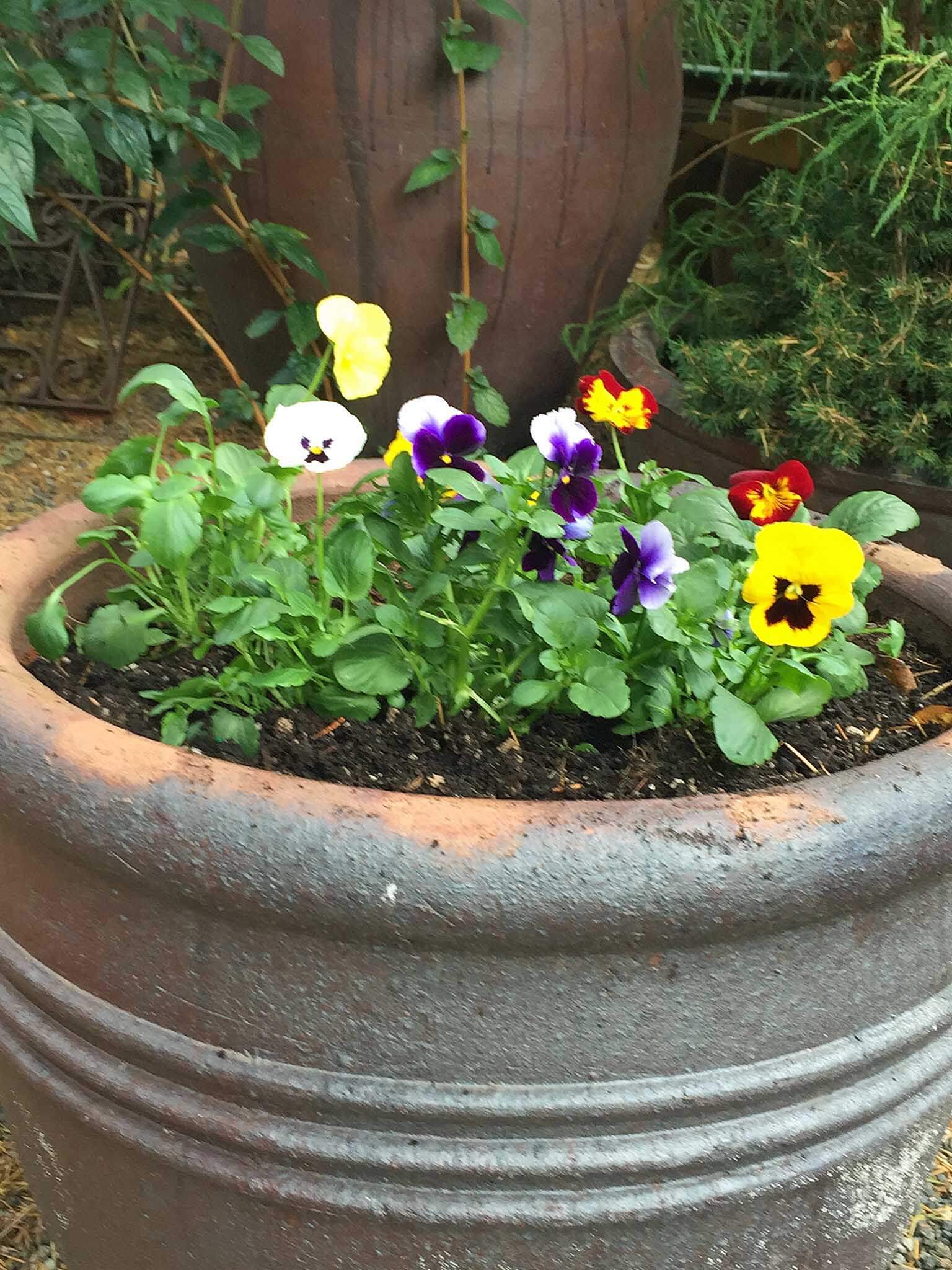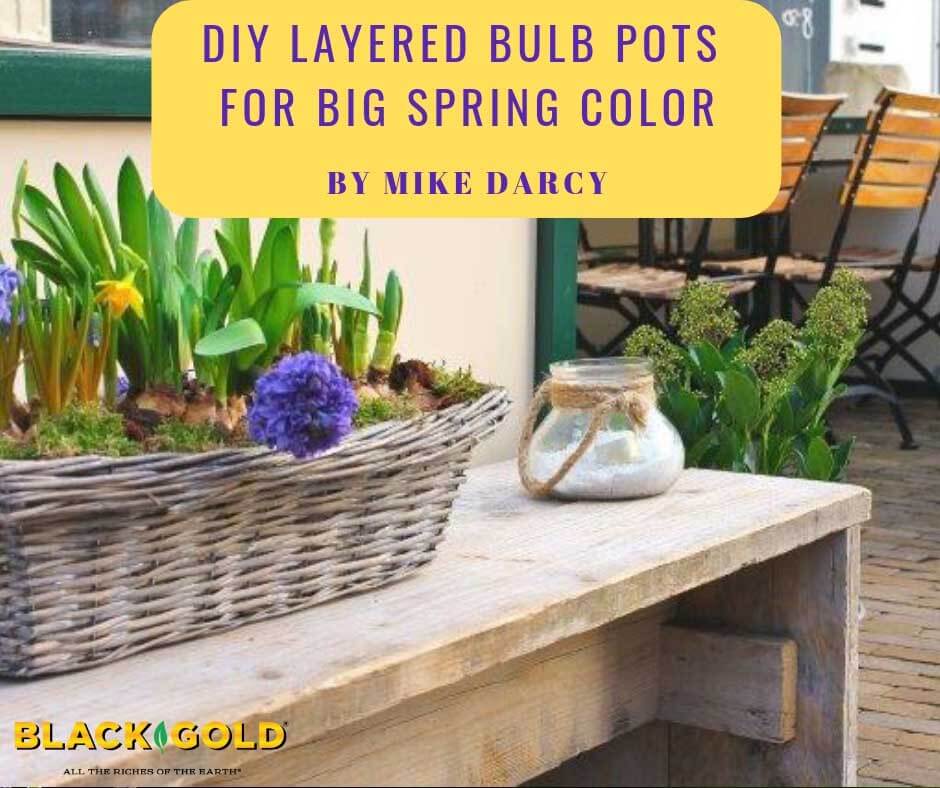
Early in the new year, when I see the first crocus poke up through the soil to herald the coming of spring, I know that my bulb pots are close to looking spectacular. Each year, I plant up bulb pots in layers for extended bloom. I fill them with early crocus, mid-spring hyacinths and daffodils, and late-season tulips. Then I add winter pansies to keep them looking great through the cold months.
Now is a good time to buy bulbs and an excellent time to plant. With this being mid to late fall, garden centers should still have a nice selection of spring flowering bulbs, and they may even be having clearance sales to make space for the coming holiday season.
Layered bulb pots can contain any popular, well-known bulbs that we traditionally plant in the fall for spring flowers. The key is choosing bulbs with different blooming times, so check that information at the time of purchase. Then you layer them in a pot according to their specified planting depth.
Creating Layered Bulb Pots
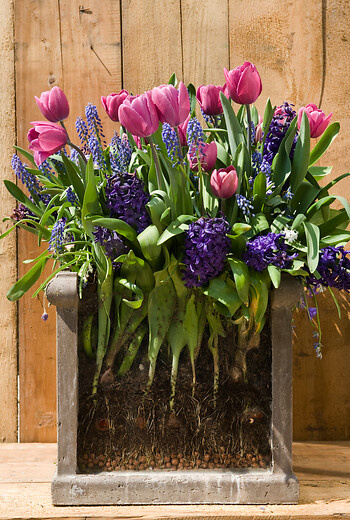
Containers for Layered Bulb Pots: The key is starting with a fairly large pot that is at least 24″ in diameter and 20″ tall. Containers that resist cracking as temperatures rise and fall are best. Porous Terracotta, ceramic, and concrete containers take up moisture and are more prone to cracking. Containers made of metal, plastic, wood, and fiberglass resist cracking and are better for overwintering bulb pots.
Bulb Selection for Layered Bulb Pots: Tulips, daffodils, hyacinths, grape hyacinths, and crocus all overwinter well in containers. Just be sure to choose at least one early blooming, one mid-season, and one late-season bloomer. As I select the bulbs, I determine their color, planting depth, height, and bloom time. I also check to see if they look healthy and are firm to the touch. Here are three-layered container recipes to try:
Recipe 1: Crocus ‘Pickwick’ (purple striped, early), yellow pansies (early-late), Daffodil ‘Coral Crown’ (orange and yellow, 6″ depth, 12-16″ high, mid-season), Tulip ‘Princess Irene’ (orange-purple, 6″ depth, 14″ high, mid- to late-season).

Recipe 2: Crocus ‘Giant Blue’ (purple-blue, 3″ depth, 5″ high, early), hyacinth ‘Delft Blue’ (purple-blue, 5″ depth, 10″ high, early), Daffodil ‘Quail’ (yellow, 6″ depth, 10-14″ high, mid-season), Tulip ‘Angelique’ (double pink, 6-8″ depth, 16″ high, late-season), white pansies (early-late).

Recipe 3: Crocus ‘Jeanne d’Arc’ (white, 3″ depth, 5″ high, early), Anemone blanda ‘Blue Star’ (violet-blue, 2″ depth, 4″ high, early), purple pansies (early-late), Daffodil ‘Irene Copeland’ (ivory and yellow, 6″ depth, 12-16″ high, mid-season), Tulip ‘Antoinette’ (yellow-pink, 6-8″ depth, 18″ high, mid- to late-season).

Preparing Layered Bulb Containers
Once you have chosen your container, add at least 3″ of Black Gold All Purpose Potting Mix in the bottom and mix in some bulb fertilizer. Make sure your pot is deep enough for all your bulbs while offering at least 2″ at the top for watering. Here is how I would plant Recipe 2, the number of bulbs you need will depend on your pot size. The sequence that you plant the bulbs can vary, but I have found that this order works well for me:
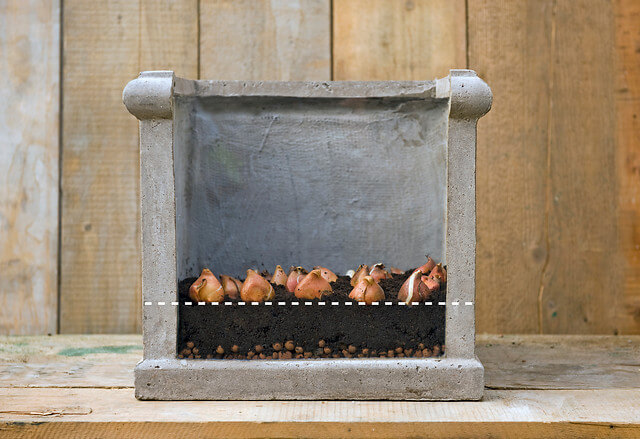
- Set the first layer with the late-flowering tulips, placing them 2″ apart.
- Add 2″ of potting soil to cover the bulbs, making sure you mark the gaps with a finger.
- Set the daffodils, placing them 2″ apart in the gap areas.
- Add another 2″ of potting soil to cover the bulbs.
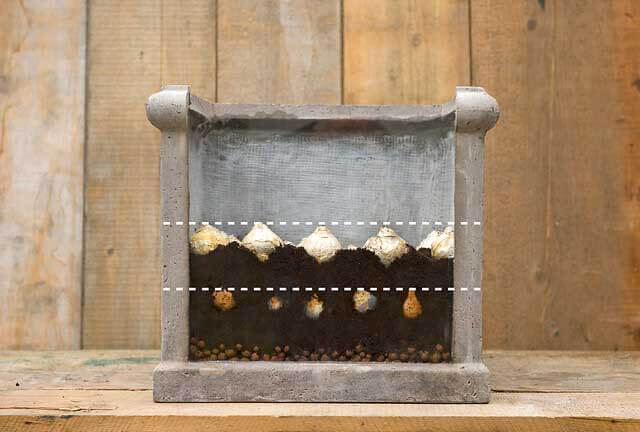
Step 3: add your second bulb layer and continue. (Image by bulb.com) - Set the hyacinths, spacing them 3″ apart (some bulb overlap won’t hurt).
- Add another 2″ of potting soil to cover the bulbs.
- Set the crocus, spacing them 3″ apart along the pot edges.
- Add a final 3″ of potting mix, plant your pansies, and water the pot.
Garden centers sell winter pansies in bud or bloom, so your containers will have instant color all winter as you wait with anticipation for the bulbs to emerge. If your bulb containers are not in a covered area, our Pacific Northwest winters will usually supply enough additional moisture until spring.
Enjoy your pansy pots now, knowing that you will have a long season of flowering bulbs during the spring. Bulb layering is easy to do, and it is also a good project for kids. They enjoy the planting and can’t wait to see the magic when spring arrives.
